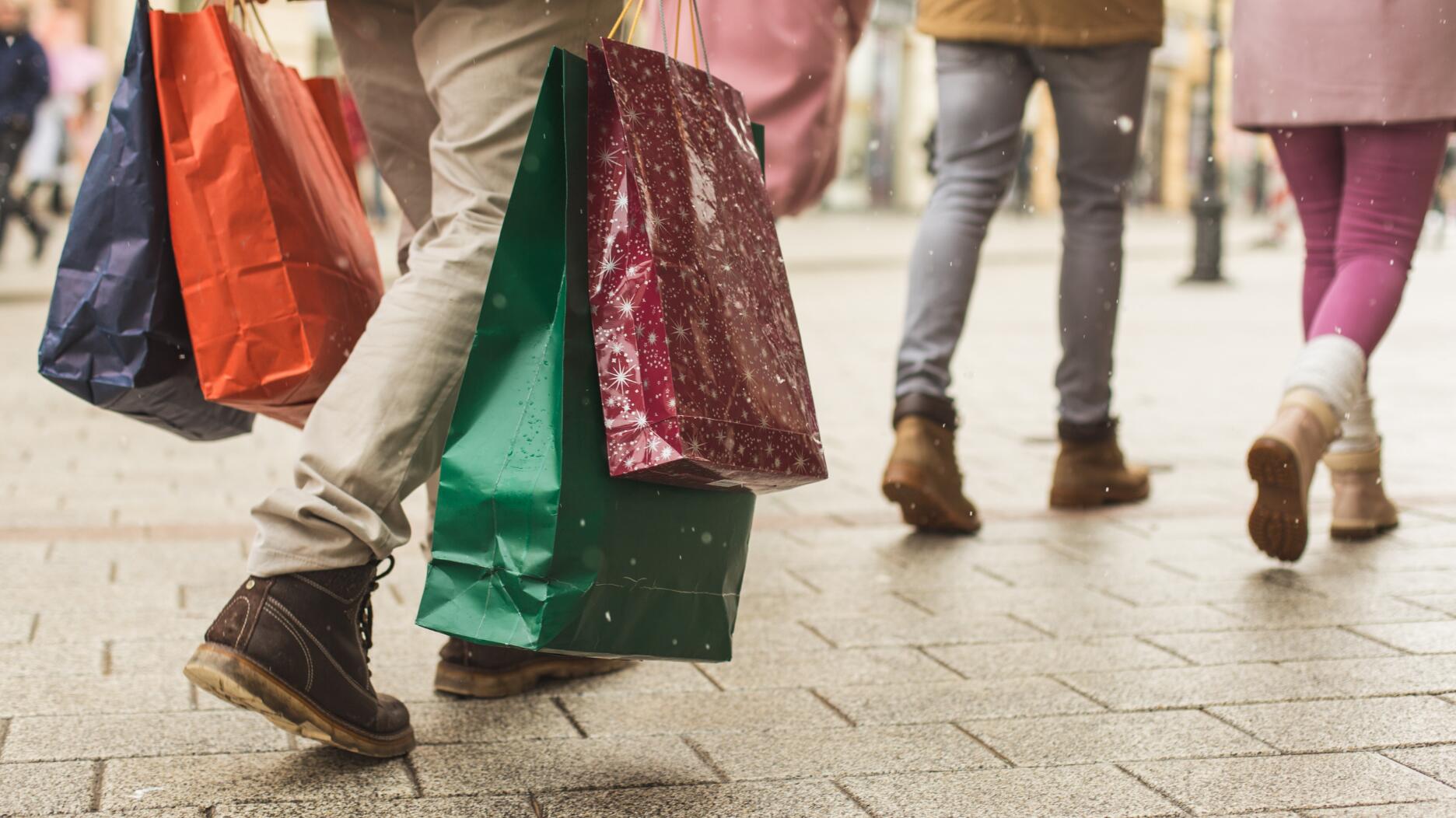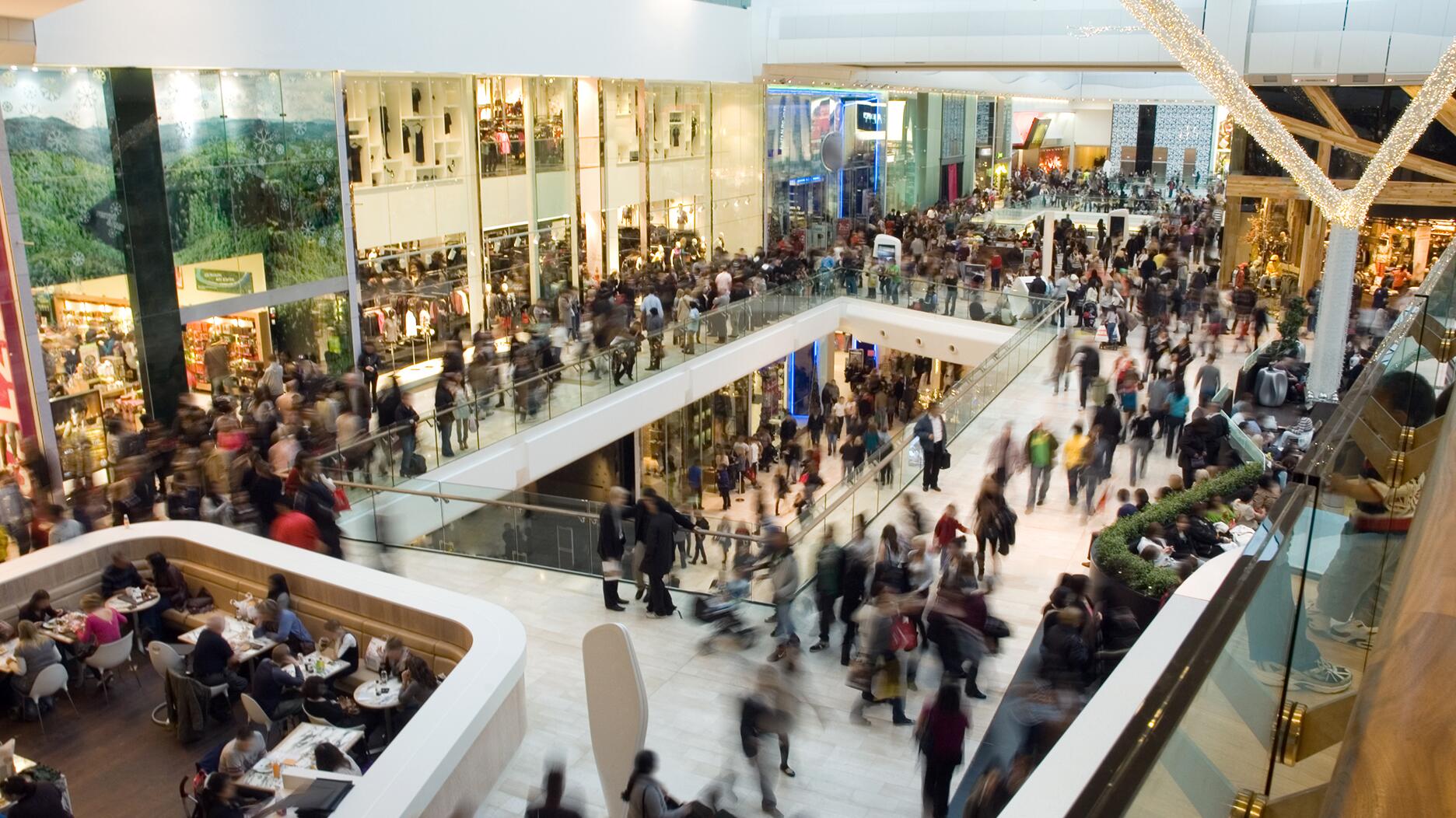Deloitte Also Predicts a Happy Holiday for Retailers
Holiday retail sales are forecast to grow between 7 and 9 percent, as per the firm’s annual forecast.

The financial services company expects 2021 holiday retail sales to increase between 7 and 9 percent, a very merry forecast that comes on the heels of a similar prediction from Mastercard SpendingPulse.
A rise in vaccination rates is bringing consumers out of the house and into stores and restaurants, boosting spending on services while spending on goods remains steady, said Daniel Bachman, Deloitte’s U.S. economic forecaster, in a press release about the forecast.
“A steady decline in the savings rate to pre-pandemic levels will support consumer spending and keep retail sales elevated this season,” he said.
Consumer spending strength will carry over to online shopping as well, with holiday e-commerce sales expected to grow between 11 and 15 percent.
E-commerce sales are expected to total $210 billion to $218 billion.
“Retailers who remain resilient to shifting consumer behaviors and offer convenient options for online and in-store shopping … will be poised for growth this holiday season.”— Rod Sides, Deloitte
This year’s merry holiday season follows last year’s strong season, reflecting continued growth in sales.
Holiday 2020 sales were higher than expected, up nearly 6 percent year-over-year, totaling $1.19 trillion, as per the U.S. Census Bureau.
Last year, e-commerce sales grew nearly 35 percent to $189 billion.
“The 2021 forecast projects a strong growth rate amid already elevated retail sales and growth in disposable personal income that is likely to remain flat heading into the season,” said Deloitte.
The Delta variant and pandemic-related uncertainty could lead to more spending on goods, the company also noted.
“While consumer concerns about health and safety have eased since the last holiday season, pandemic-influenced shopping behaviors continue to gain traction,” said Rod Sides, vice chairman, Deloitte LLP and U.S. retail and distribution sector leader.
“Retailers who remain resilient to shifting consumer behaviors and offer convenient options for online and in-store shopping, as well as order fulfillment, will be poised for growth this holiday season, and into the new year.”
A strong holiday season may seem questionable, particularly when considering U.S. consumer confidence fell to a seven-month low in September as COVID-19 infections continue to rise, marking the third consecutive monthly decline and the lowest level since February.
However, National Retail Federation Chief Economist Jack Kleinhenz remains hopeful for the holidays, as he takes other factors into consideration.
“With consumer spending accounting for roughly two-thirds of U.S. gross domestic product, all eyes are closely watching shoppers’ ability to drive the economy,” said Kleinhenz.
“If consumer finances are any indication, there’s reason to be optimistic: Households remain in good shape, with consumers in the aggregate actually underspending relative to current income.”
While enhanced unemployment benefits have expired, that loss may be offset by an uptick in savings since the start of the pandemic, he said.
There hasn’t been much to celebrate on the economic front in recent months, as COVID-19 cases went from record lows in the early summer to a six-month high by September, straining health care systems in hard-hit states.
August payroll numbers were bleak, up 235,000 jobs nationwide, down from a gain of 1.1 million the month before.
And last month, the Federal Reserve lowered its forecast for gross domestic product growth for the year to 6 percent from 7 percent, and expects unemployment to end the year at 4.8 percent rather than 4.4 percent.
“There’s a saying that you should never underestimate the American consumer—and its corollary is that you should watch what consumers do, not what they say.” — Jack Kleinhenz, NRF
The Consumer Price Index showed inflation was up 5 percent year-over-year in August, due to consumer demand and supply chain disruptions.
To add to that, the University of Michigan Index of Consumer Sentiment fell to 71 in September, below its pandemic high of 88.3 in April, marking the lowest confidence level since the start of the pandemic.
The Conference Board’s consumer confidence index experienced a similar drop.
In spite of all this, August retail sales still rose, up 2 percent month-over-month and 12 percent year-over-year.
The October issue of the NRF’s Monthly Economic Review showed consumers’ mid-summer savings rate of 10 percent exceeded pre-pandemic levels, noting that strong employment gains, higher wages, and the Child Tax Credit would boost income growth going forward.
“That strong momentum shows there’s a big disconnect between consumer confidence and consumer spending at the moment and that the downdraft in confidence may well be a false scent,” Kleinhenz said.
“There’s a saying that you should never underestimate the American consumer—and its corollary is that you should watch what consumers do, not what they say.”
While August job gains missed the mark, wages grew more than 4 percent year-over-year with job openings at a record high of 10.9 million at the end of July.
The numbers show that demand for labor is still strong, said Kleinhenz, and that a lack of workers rather than a lack of jobs is the impediment to hiring.
“With the end of supplemental unemployment benefits taking away financial incentives to stay home and the reopening of schools easing child care responsibilities for parents who want to get back to work, stronger growth should be on its way.”
While some economists believe financial incentives have kept people from working, others point to a lack of childcare and low wages as well as some workers retiring early or looking for a new career path.
The Latest

It purchased the “Grosse Pièce,” an ultra-complicated Audemars Piguet pocket watch from the ‘20s, for a record-breaking price at Sotheby’s.

Chandler got his start at Michelson Jewelers and has served as DCA president and CEO since 2001. He will retire at the end of the month.

Sponsored by Digital Monitoring Products

How Jewelers of America’s 20 Under 40 are leading to ensure a brighter future for the jewelry industry.

The boutique is slated to open this week inside Terminal 8, offering pre-owned Rolex watches and more to international travelers.


The lab-grown diamond grower now offers custom engagement and fashion jewelry through its Kira Custom Lab Jewelry service.

The special-edition egg pendant ingested in a New Zealand jewelry store was recovered after a six-day wait.

Roseco’s 704-page catalog showcases new lab-grown diamonds, findings, tools & more—available in print or interactive digital editions.

Associate Editor Natalie Francisco plays favorites with Piece of the Week, selecting a standout piece of jewelry from each month of 2025.

The “Love and Desire” campaign is inspired by the magic that follows when one’s heart leads the way, said the brand.

Two awardees will receive free tuition for an educational course at the Swiss lab, with flights and lodging included.

Berta de Pablos-Barbier will replace Alexander Lacik at the start of January, two months earlier than expected.

Sotheby’s held its first two jewelry sales at the Breuer building last week, and they totaled nearly $44 million.

Winners will receive free registration and lodging for its fourth annual event in Detroit.

Here are six ideas for making more engaging content for Instagram Reels and TikTok, courtesy of Duvall O’Steen and Jen Cullen Williams.

The honorees include a notable jewelry brand, an industry veteran, and an independent retailer.

Carlos Jose Hernandez and Joshua Zuazo were sentenced to life without the possibility of parole in the 2024 murder of Hussein “Sam” Murray.

Yood will serve alongside Eduard Stefanescu, the sustainability manager for C.Hafner, a precious metals refiner in Germany.

The New Orleans jeweler is also hosting pop-up jewelry boutiques in New York City and Dallas.

Set in a Tiffany & Co. necklace, it sold for $4.2 million, the highest price and price per carat paid for a Paraíba tourmaline at auction.

The jeweler’s “Deep Freeze” display showcases its iconic jewelry designs frozen in a vintage icebox.

Take luxury gifting to new heights this holiday season with the jeweler’s showstopping 12-carat sphene ring.

This year's theme is “Unveiling the Depths of the Ocean.”

In its annual report, Pinterest noted an increase in searches for brooches, heirloom jewelry, and ‘80s luxury.

Starting Jan. 1, customers can request the service for opal, peridot, and demantoid garnet.

The 111-year-old retailer celebrated the opening of its new location in Salem, New Hampshire, which is its third store in the state.

The new catalog features its most popular chains as well as new styles.



























